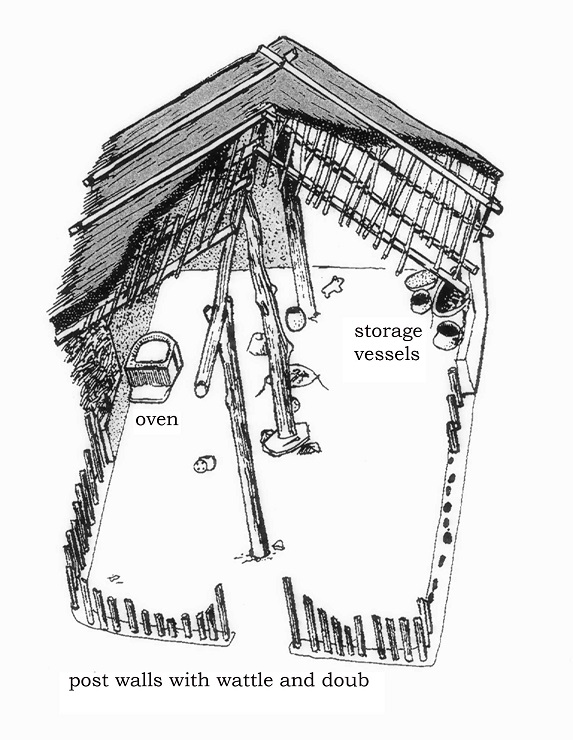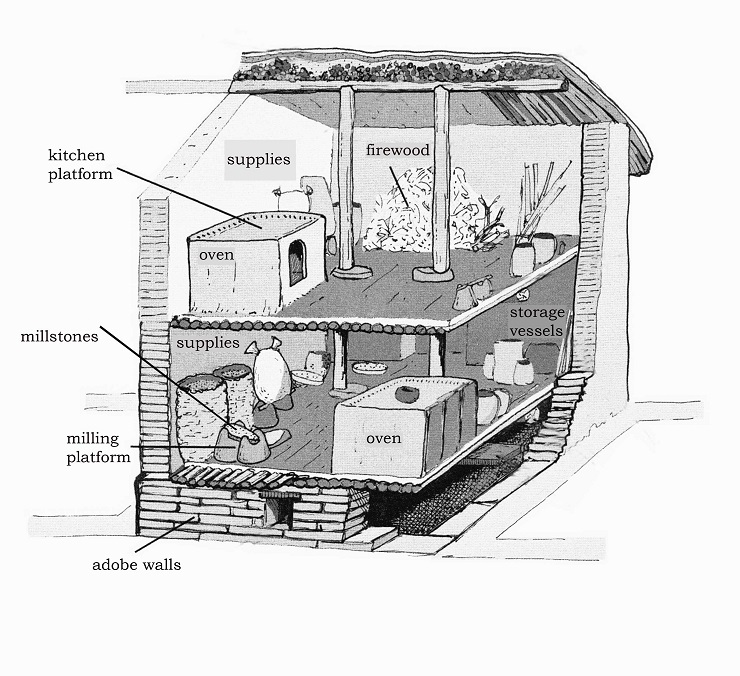Ilipinar, located in the transit area between the southeastern Balkans and Anatolia, is a site of the tella type where there was a settlement that lasted for at least 600 years, where elements of the Neolithic period that are typical of both areas are combining together. Interesting is that in terms of the work’s artefactual content, the local settlement has much in common with the southwestern area of Turkey, from where neolithisation spread into these parts, while the architecture remained completely different.
|
|
| In Europe we can encounter rectangular buildings that were constructed from post structures during the Neolithic period. The post houses in Ilıpınar were constructed with a single-nave, as also were the houses in the Carpathian Basin. Modified and adapted from Özdoğan – Başgelen 1999, 158. |
The settlement was located in a swampy area in the vicinity of a large lake. Its economy was based on growing plants and, especially at the beginning, on cattle breeding, whereas hunting is only marginally documented. Its architecture represents three basic types of structures - the oldest are buildings constructed from beaten earth. Subsequently, the pole construction houses were implemented using daubed boards, which was unprecedented during the Neolithic period in most of the areas of the Near East. This construction technology is typical rather of the Neolithic houses from the north of Greece to Central Europe. Planned development with the radial arrangement of houses along the watercourse had remained basically unaltered for cca. 300 years. A radical change had occurred at some point in time around 5700/5600 BC, when smaller-scale two-storey houses made of adobe bricks started to be built. The material used that is related to the Southern or the Central Turkey tradition may constitute evidence of climate change or of the expansion of power. The buildings are concentrated in a single line in a semicircular layout around an open space, where a thick layer of manure was documented that refers to animal husbandry taking place in what was probably a protected area.
Around the year 5400 BC an extensive fire occurred, thanks to which, however, we now have a unique archaeological situation available, including the preserved interior furnishings of these two-storey buildings. Each of them could be inhabited by 5 or 6 people. Also documented was the intensive processing of plant products.
In this geographical area there are individual graves, groups of graves and even larger burial sites – either within the settlements, at their borders or in their immediate vicinity. Nowhere are there burials beneath the floors of houses – which are typical of Central Anatolia - documented.
|
|
| The Later Neolithic adobe brick buildings were much more complex and, according to the experts, they had two storeys. Modified and adapted from Özdoğan et al. 2013, 85. |
Want to learn more?
- Roodenberg, J. 1999: Ilipinar, An Early Farming Village in the Iznik Lake Basin. In: M. Özdoğan – N. Başgelen: Neolithic in Turkey, the Cradle of Civilisation. Istanbul: Archaeology & Art Publications, 193-202.
- Roodenberg, J. 2011: Ilipinar: A Neolithic Settlement In The Eastern Marmara Region. In: S. R. Steadman – G. McMahon (eds.): The Oxford Handbook of ancient Anatolia. Oxford: Oxford University press, 950-967.
- Roodenberg, J. – Alpaslan Roodenberg, S. 2013: Ilipinar and Mentese, Early Farming Communities in the Eastern Marmara. In: M. Özdogan – N. Başgelen – P. Kuniholm: The Neolithic in Turkey. New Excavations & New Research. Istanbul: Archaeology & Art Publications, 69-91.
 Archeologické 3D virtuální muzeum
Archeologické 3D virtuální muzeum

.jpg)

